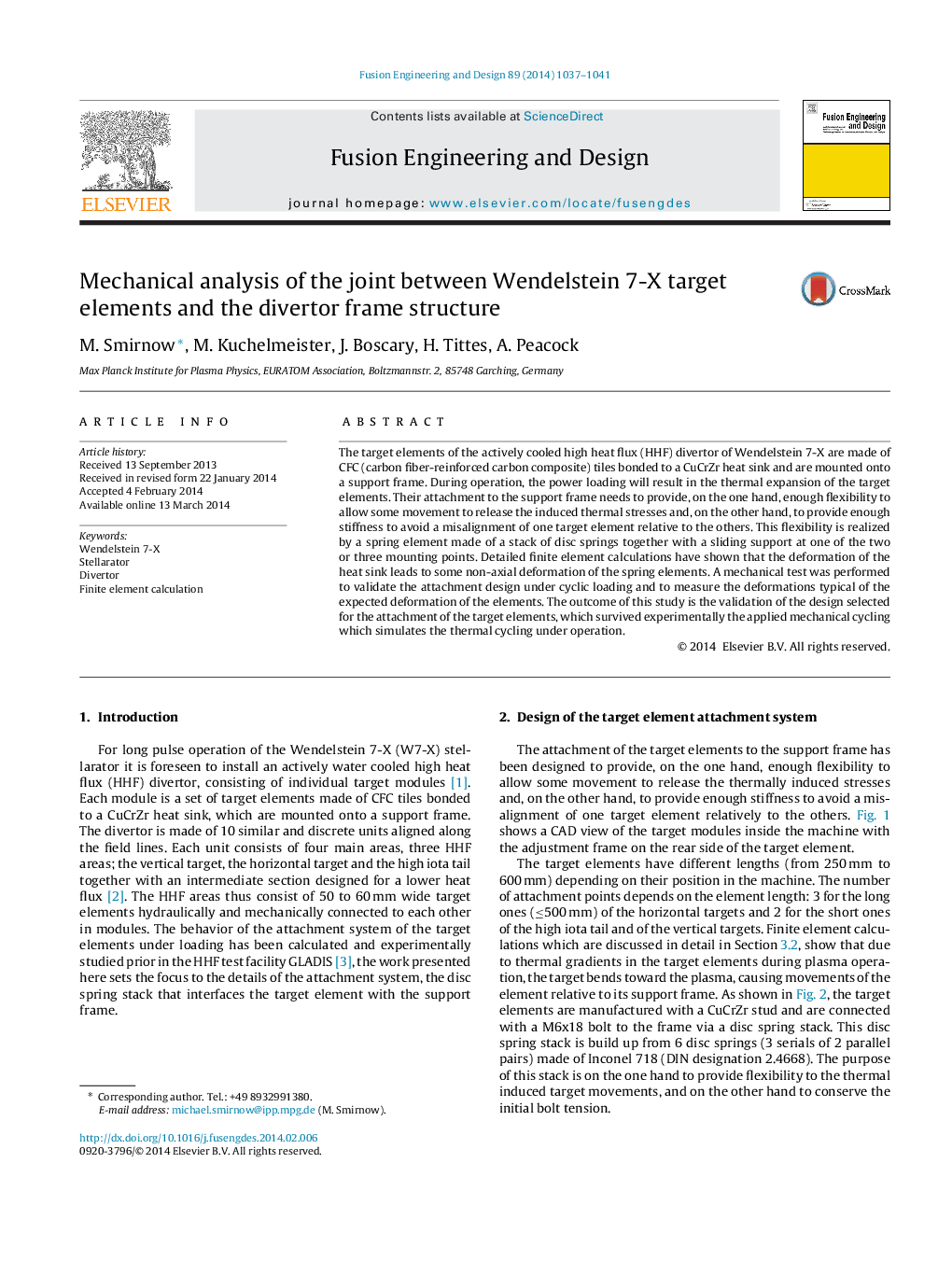| Article ID | Journal | Published Year | Pages | File Type |
|---|---|---|---|---|
| 271175 | Fusion Engineering and Design | 2014 | 5 Pages |
The target elements of the actively cooled high heat flux (HHF) divertor of Wendelstein 7-X are made of CFC (carbon fiber-reinforced carbon composite) tiles bonded to a CuCrZr heat sink and are mounted onto a support frame. During operation, the power loading will result in the thermal expansion of the target elements. Their attachment to the support frame needs to provide, on the one hand, enough flexibility to allow some movement to release the induced thermal stresses and, on the other hand, to provide enough stiffness to avoid a misalignment of one target element relative to the others. This flexibility is realized by a spring element made of a stack of disc springs together with a sliding support at one of the two or three mounting points. Detailed finite element calculations have shown that the deformation of the heat sink leads to some non-axial deformation of the spring elements. A mechanical test was performed to validate the attachment design under cyclic loading and to measure the deformations typical of the expected deformation of the elements. The outcome of this study is the validation of the design selected for the attachment of the target elements, which survived experimentally the applied mechanical cycling which simulates the thermal cycling under operation.
